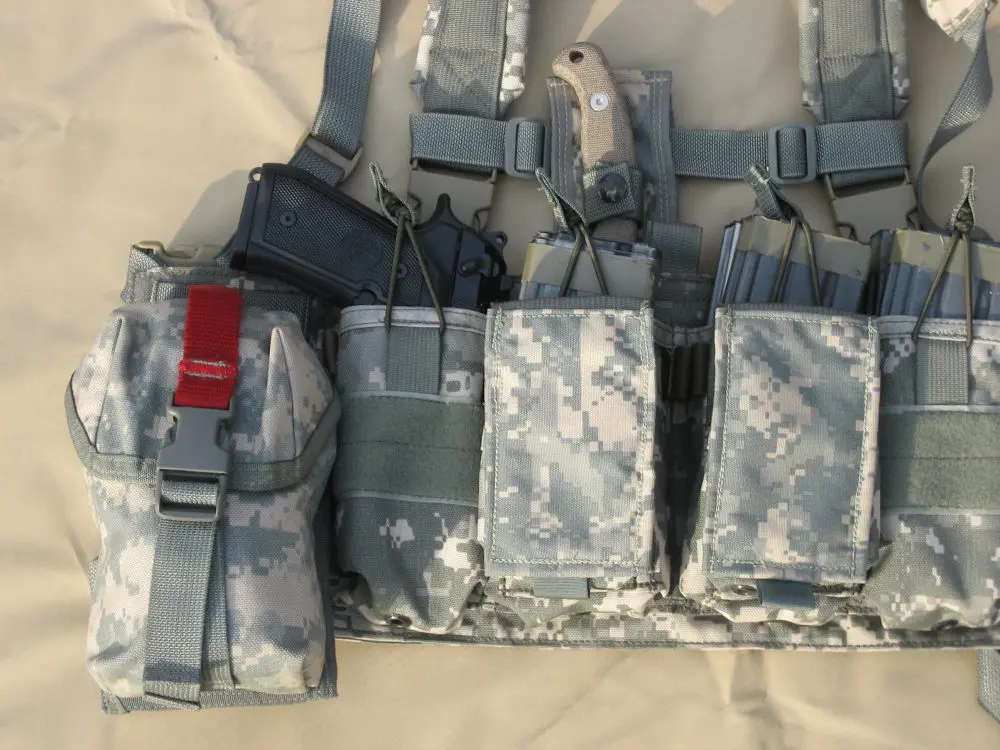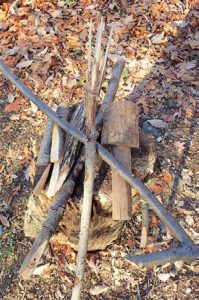
IF you have a camp or cabin for hunting, camping, fishing, or shooting, handcrafting wooden tools is one way to make that camp better. And who doesn’t want a more functional camp?
It’s also a chance to practice some simple skills. When it comes to the outdoors, simple is always better.
Table of Contents
CAMPFIRE TOOLS
In the 1920s Dover Publication Woodcraft and Camping, George Sears (“Nessmuk”) devotes a chapter to camp cookery. He also discusses the campfire, and what is essential to handling it.
He said, “No campfire should be without poker and tongs.” I totally agree, as I know too well how difficult trying to move or rearrange coals and burning logs can be without a proper poker stick. I’m sure we’ve all reached in and thought we could quickly move a log with our hand before the heat or flame got us. It usually ends badly.
A fire poker stick is quite a simple affair, but for those who cook with a kettle or pot that has a bale to suspend over a fire, a certain type of poker is required. It can be made using a fixed-blade knife, small saw, machete, or axe-type of chopper. Preferably it should be made from green wood to resist the heat better, but I use whatever is available. Usually a stout dead stick will do.
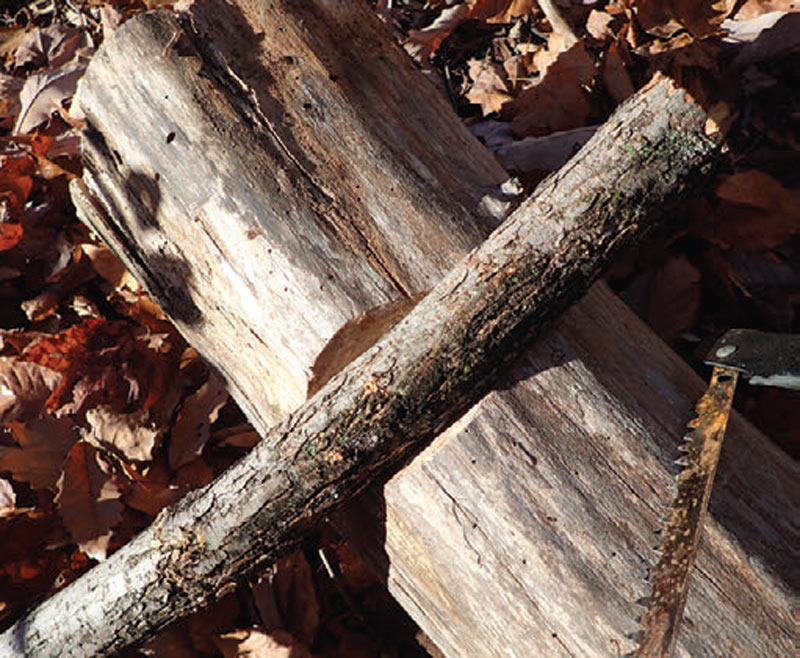
I go for something about broomstick- thick and three to four feet long. It should have a neatly trimmed forked section at the bottom for grabbing pots and kettles from the fire and for hooking burning wood to move and rake coals.
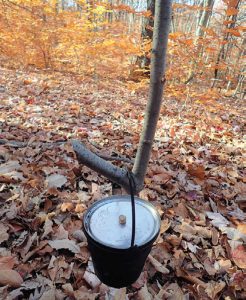
The top end should be flattened almost to a point. This flattened section is for fire poking and lifting the lid of a kettle or pot, so it’s best to make it like a flathead screwdriver. This simple tool adds safety and convenience to any campfire.
BUILDING TOOLS
There’s no denying how important a wooden stump can be in the backyard or camp, for providing a flat surface. After a day of outdoor activities, a flat place to sit down in camp is comforting. It makes a good table or nightstand as well.
When it comes to building a fire or other “camp crafts,” a stump is the perfect work bench for splitting or carving wood on top of. If laid down sideways, it makes a decent surface to saw on, especially if a “V” notch is made on the side, making it multifunctional.
My most-used wooden tool is the mallet (maul). Having a hardwood hammering tool beats grabbing any old wooden stick to use as a baton or hammering device. Chances are, it will be rotten and crack at the first blow.
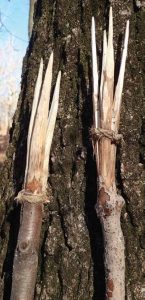
A mallet can be made easily with a saw, fixed blade, axe, or tomahawk. I have made many mallets of different sizes, and there isn’t really a right or wrong size.
Select a stout piece of wood, dry or green, about three to seven inches thick, and fingertip to elbow length. At about the length of a hand (fingertip to wrist), make a mark and then saw around the wood, about half an inch or more deep. Stand the wood up so the sawed section is on the bottom and with a knife or your preferred cutting tool, baton the wood toward the saw cut. This will start to take shape as the handle, but needs to be carved until comfortable.
Wedges are another important wooden tool to have, especially if you don’t have a heavy tool to split wood with.
If only a fixed blade is on hand, wooden wedges are your best friends for splitting logs. Start with stout hardwood pieces. I select wood about the length of my forearm and two to three inches thick. A machete or tomahawk can make these fast by chopping a chisel or “wedge” on each side.
The top portion should be beveled to reduce splitting when it is pounded by your new mallet!
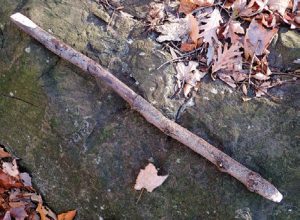
DIGGING AND THROWING TOOLS
Tools can also be used for hunting or as weapons. Two that come to mind have been around since cavemen were tossing them at dinosaurs.
Spears have been made from wood by almost all indigenous cultures around the world and serve many different purposes in a camp. A spear is an extension of your arm, allowing a much higher reach into trees for bird nests (for tinder) or fruit. It’s also suited for dark places a hand should be wary of.
For frogging and primitive fishing, a spear is the perfect wooden tool.
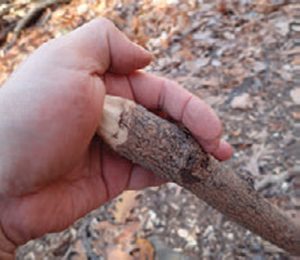
And it isn’t limited to water: Small mammals are also targets of the mighty spear wielder.
Make a gigging spear by selecting a long pole that extends higher than your eyes (for safety reasons). Pick the end with the least knots on it and, with a knife or tomahawk, split the pole twice in the shape of a plus symbol, about six to eight inches down. At this point, firmly hold the pieces together as if they were still intact, and sharpen them all together as one point.
Next, wedge sticks in the slits (opposite each other) so they are splayed open. From this point, it is a matter of fine tuning it to optimum sharpness. Use cordage to bind just below the splits to prevent further splitting.
A throwing stick is almost as simple and primitive as throwing a rock at something. To make the most out of a throwing stick, modify it to be a useful camp tool.
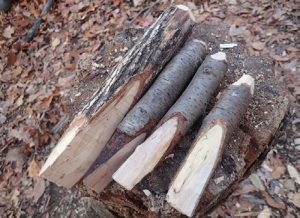
Select a piece of wood about the length of your fingertip to your armpit, and about wrist thickness. A chopping tool can help with the construction, or any knife will do. I like to select a piece of wood that has a slight curve to it, but not as dramatic as a boomerang.
One end should be fashioned like a flathead screwdriver for hard digging into the ground, and the other end should be rounded for bearing down hard with a hand when digging.
This serves as a throwing weapon for small game like squirrels, marmots, iguanas, sloths, and rabbits, which is why it’s also known as a rabbit stick. It is thrown low to the ground and sideways. The curvature keeps it flying somewhat straight. It doesn’t take too much practice to become proficient with it.
You can also use the tool for digging up roots or a trench for a Dakota fire pit, and employ it as a baton or a wedge in camp. The throwing stick is a true multifunctional wooden tool!
CONCLUSION
Tools don’t need to be made from space-age materials to be functional. Tools used in the rustic camps of yesteryear can be just as valuable today. Plus it’s very rewarding to make them yourself!
